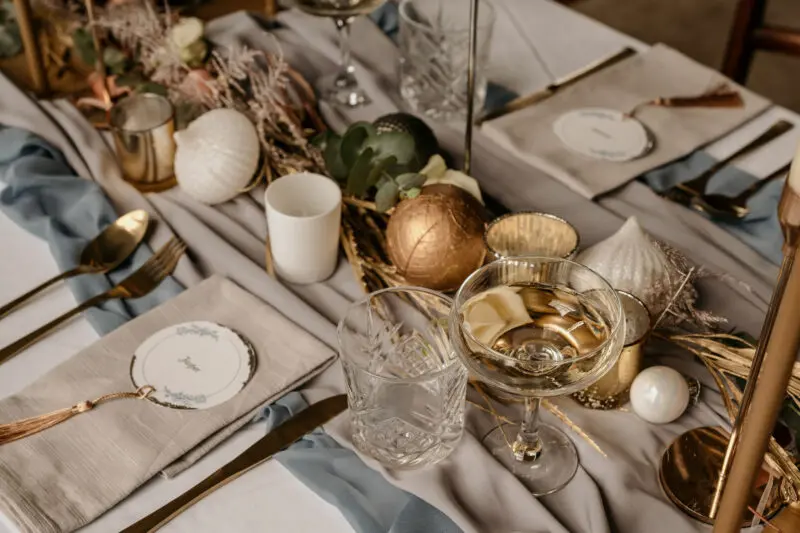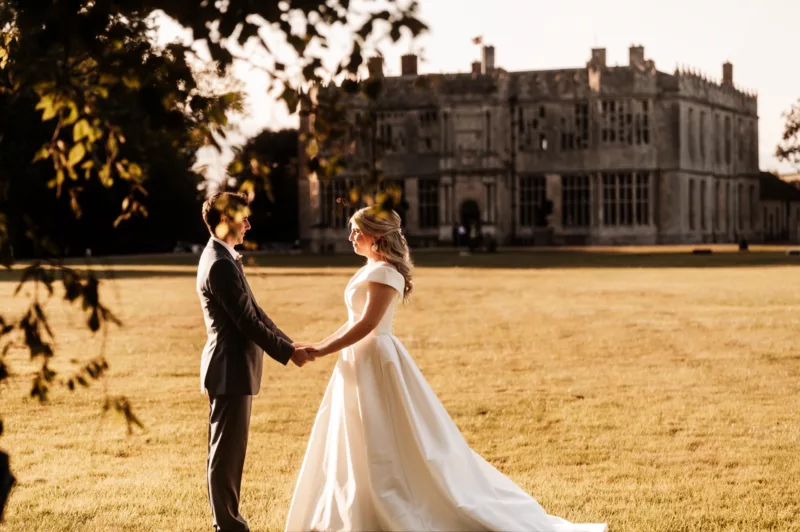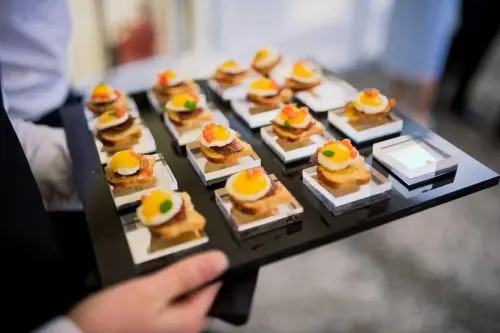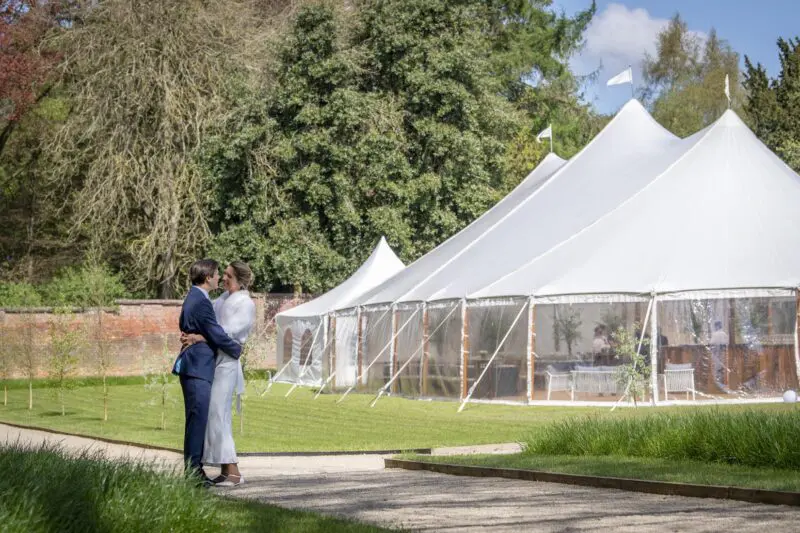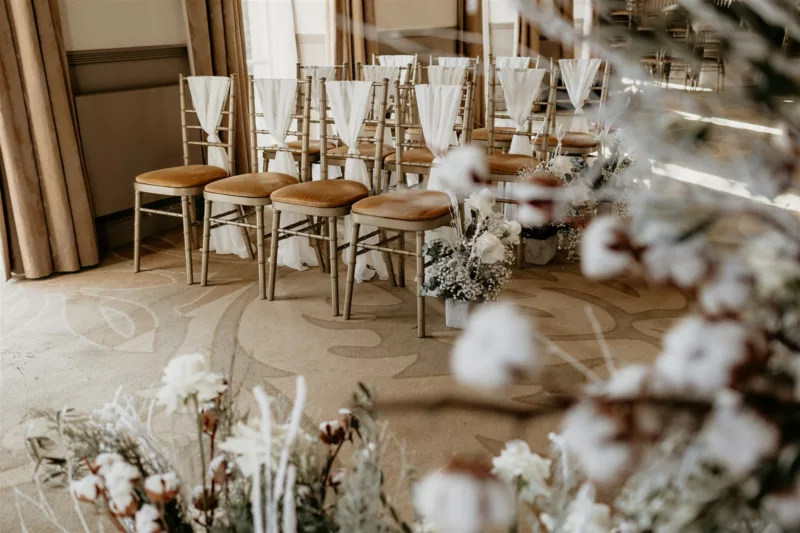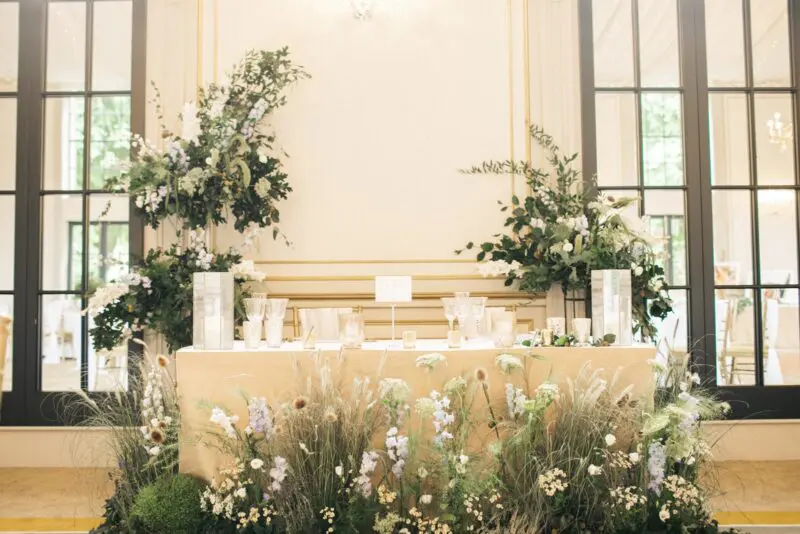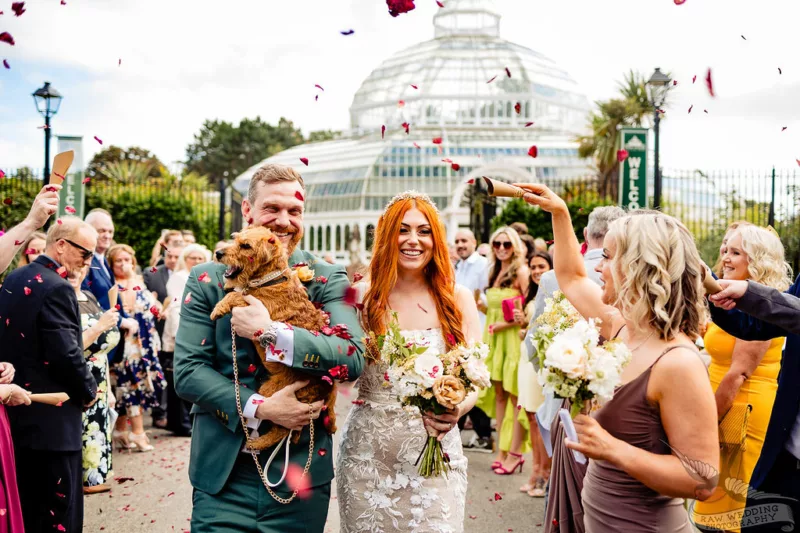Now that you’re engaged, you’ll be looking at dealing with multiple wedding suppliers, all speaking a seemingly impenetrable language of weddings! When it comes to wedding planning terminology, there are a lot of terms you may never have heard of. So here’s our quick guide to all the lingo you need to know to help you with your wedding planning.
Note- we’ve gone with the terms usually used in the UK, the wording will be slightly different in the US and Australia
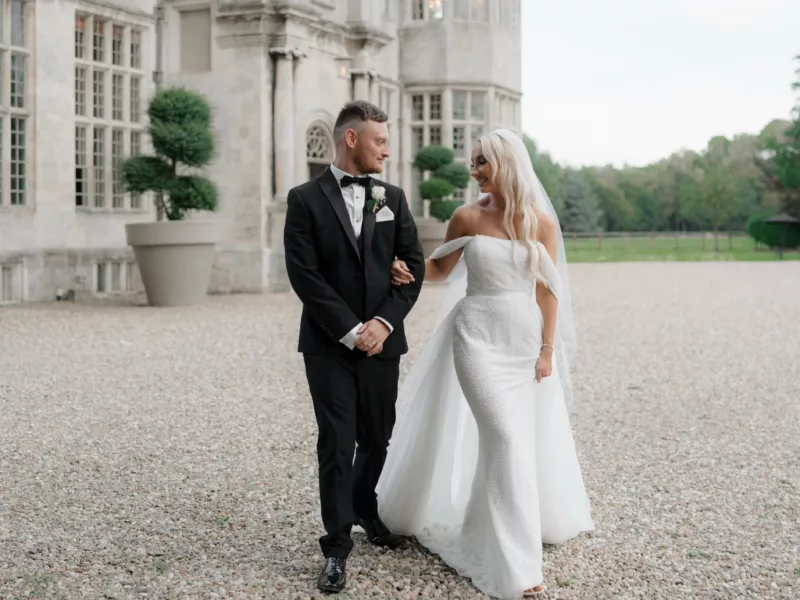
Wedding A to Z: your guide to wedding planning terminology.
A is for:
Aisle runner – A long piece of carpet that runs between the chairs of your ceremony space.
Attendants — The attendants are people who have an official role during the wedding, which includes the best man, bridesmaids, ushers, flower girls, etc.
B is for:
Best Man — The groom’s main supporter on the wedding day, also responsible for arranging the stag night. The Best Man may keep the rings for the ceremony, unless a separate ring bearer is involved. Nowadays the groom may have a female main supporter, sometimes called a Best Woman
Bouquet – An arrangement of flowers, held by the bride or other female attendants.
Bouquet toss – Unusual these days, but the new bride would toss her bouquet after her wedding to her unmarried friends. Whoever caught it was thought to be next to be married. Nowadays, many brides keep their bouquets and have them dried as keepsakes.
Bridesmaid — The female members of the bride’s party, usually close friends or family members of the bride. A male bridesmaid is a bridesman.
C is for:
Candelabra — This is a large, branched candle holder, which usually holds more than one candle. It can be used on tables to give height to the decorations.
Celebrant — Widely, this means the person who conducts the wedding ceremony. More specifically, it would refer to a lay person who conducts a ceremony which is not legally recognised, i.e. not a registrar. Celebrant ceremonies can be held anywhere and can be completely personalised, but are not legally binding.
Centrepiece — Decorations in the middle of a dining table. They can be made up of flowers, candles, or other decorations.
Charger — A large decorative plate, which is used at each place setting. It is sometimes removed before the starter is served, and sometimes the starter will be placed on top.
D is for:
Destination Wedding — This refers to a wedding that takes place in a country, or sometimes at the other end of the country, from where the couple lives. It often involves the wedding party or guests staying with the couple for a weekend or more.
E is for:
Elopement — This used to mean the couple running away to get married. It can now also mean a small wedding involving just close family as witnesses.
Engagement Photos — Many couples have a photoshoot to mark their engagement. This is a great way to get to know your wedding photographer, as well as practice those all-important poses!
Exclusive Use– Usually referring to venues. This means that it will be only your wedding guests using the venue. If it is not exclusive use, you will be sharing the space with hotel guests or other users.
F is for:
Favours – A small gift from the couple to their guests, usually placed on the tables. Traditionally these would have been sugared almonds to symbolise fertility, but these days any small gift can be chosen.
Fiancé — A man who is engaged to be married.
Fiancée — A woman who is engaged to be married.
First Look — This is the moment when the bride and groom first see each other before their ceremony. It can also be the moment when a father sees his daughter dressed in her wedding dress.
Flower Girl — The flower girl was traditionally filled by a young girl, who may scatter flower petals down the aisle before the bride. Nowadays this role has evolved to encompass friends, grandmothers or other relatives.
G is for:
Gift List — A list of the couples preferred gifts, usually held at one shop or sometimes an organisation. Also referred to as a gift registry.
Golden Hour — The Golden Hour is the short period just before sunset when the light is perfect for taking photos. It’s a great idea to plan for this in your wedding day timings.
Grand Entrance — This is when the newlyweds are introduced at the reception.
Groomsmen — Male members of the groom’s party and officially attend to the groom at a wedding. Traditionally referred to as ushers, this is a more modern development. Female members would be Groomswomen
Guest List — The list of people invited to your wedding.
H is for:
H2B – You’ll see this on wedding planning forums- it stands for Husband to Be
Hashtag — A way of helping you and your guests find the wedding on social media! Many couples have their own wedding hashtag- there are even services that will help you create one; try ewedding
Hen Night– The party held for the bride and her female male friends before the wedding. Nowadays this can be a weekend or even longer.
I is for:
In-House — The term used for additional services offered by your venue. This is usually catering but may also be styling and floristry.
J is for:
Jewellery– obviously this includes the wedding rings! Wedding rings can be bought ‘off the peg’ or custom made, or you can use a family heirloom. Many couples also buy special jewellery for each other as gifts for the day, including necklaces and cufflinks.
K is for:
Kids– the debate is ongoing over whether children should be invited to weddings or not. If you do invite the kids, make sure you they are considered so they enjoy the day as much as the other guests. A kids entertainer, nanny, child-friendly menus and garden games are all great ideas.
Kiss- You’ll have seen it in all the rom-coms- you seal the ceremony by exchanging a kiss with your new spouse. This is a fairly recent import to the UK from Hollywood, and whilst most celebrants are happy for you to kiss in your ceremony it is worth checking. If you do kiss, make sure your photographer has a good spot to capture the moment, and hold the kiss for longer than normal so that they can get a few shots.
L is for:
Luck– some say it is lucky if it rains on your wedding day. It’s also considered unlucky for a groom to see the bridal dress before the ceremony.
M is for:
MOH/ Maid of Honour — The principal bridesmaid. This is usually filled by the best friend or sister of the bride. If the maid of honour is married, she might be referred to as the Matron of Honour.
N is for:
Naked cake– It sounds odd but looks beautiful- a wedding cake without the traditional fondant icing over it.
Notice– you’ll need to give notice of your intention to marry to your local register office, or church if you are having a religious ceremony. This needs to be at least 28 days in advance of your wedding day. Many registrars get very busy during the summer months, so give notice as soon as you can- up to a year ahead is possible.
O is for:
Outdoor wedding– It’s increasingly popular to have a wedding ceremony outdoors in the UK. At present, in England & Wales, you’ll need a venue which is licenced for wedding ceremonies outside. In Scotland, you can be married anywhere that is acceptable to your registrar.
P is for:
Palette — The colours that you are choosing for your wedding, for example for the flowers, bridesmaid dresses, chair sashes. It’s useful to have an idea of a few colours that work well together, so that your florist and/or stylist can create a look that will work seamlessly.
Photography– You’ll want to capture all those precious moments, so booking a good wedding photographer is a must! Photographers get booked up a year or more in advance, so make this one of your priorities.
Place Setting — This is a complete set of dishes and cutlery provided for a single guest at the reception — or during a meal.
Prelude — The music which plays whilst the guests are sitting down and whilst they wait for the wedding to begin.
Q is for:
Quiet moment– it’s a good idea for the couple to have a few moments away from the other guests, to just take a breather away from the excitement. A good time to do this is after the photographs and before the wedding breakfast.
R is for:
Rain Plan — If you are having any part of your wedding day outdoors, you’ll need a rain plan- a plan b incase of inclement weather.
Reception – This usually refers to the celebration after the wedding ceremony. It sometimes refers just to the immediate drinks reception, with the evening being called the ‘evening reception’.
Recessional — This is when the wedding party exits after the ceremony.
Registrar– A registrar is an official who can conduct civil wedding ceremonies.
Ring Bearer — This was typically a young boy who carried a ring tied to a pillow down the aisle. Today this role might be filled by a young relative or even a pet.
Room Turnaround — Some venues will need to change the room setup from ceremony to wedding meal, or between the meal to the evening reception. This can involve changing the chairs around, adding or removing tables, and setting up a dance space. If your venue will need to turn around the room, find out where you and your guests will be gathering and how long the turn around will take, as this will affect your timings for the day.
S is for:
Save-The-Date — A sort of advanced notice to guests, to allow them to save the wedding date on their calendar. It doesn’t need to have all the details of the wedding on, which would be included in the invitations sent out nearer the time.
Seating Plan — The seating arrangement for your guests. Unless your wedding is very formal, this will usually be for the wedding meal only.
Send-Off — This would have traditionally been when the couple left the reception for their honeymoon, but nowadays is a photo opportunity. The send-off might consist of the couple walking through sparklers, fireworks, lanterns or bubbles.
Shot List — A list of the photos/ moments that you want your photographer or videographer to capture. It’s really useful to have a think about this well in advance so that you can make sure you capture the key moments of your day.
Stag Night– The party held for the groom and his male friends before the wedding. Nowadays this can be a weekend or even longer.
Supplier Meals — You may need to arrange for some of your suppliers to be fed during the day- typically your photographer/ videographer and musicians. These won’t be the same as your full wedding meal.
Sweetheart Table — A table just for the newly married couple. This is popular when the couple have a blended family.
T is for:
Tablescape — The artistic arrangement of decor and flowers on any given table, and includes napkins, charger plates, glassware and cutlery.
Tealight Candle — Small candles which are usually placed in a glass holder or similar. They can give a wonderfully dramatic effect on tables.
Top Table — The table where the wedding party sits during the wedding breakfast. It usually consists of the couple, their parents, the best man and chief bridesmaid, and sometimes the celebrant.
Train – The long part of the skirt at the back of a wedding dress. These come in various lengths, such as court, chapel or cathedral. If you are having a very long train, you will need your bridesmaids to help you manage it as you walk.
U is for:
Usher — An usher is typically a male relative or friend of the couple that shows guests to their seats for the ceremony as well as answer general questions.
V is for:
Venue viewing — An appointment to see a venue, look at the rooms and spaces available, and decide whether you would like to host your wedding there. Ideally this is in person, but may also be virtual if needed.
Vows — These are the promises the couple make to each other during their wedding ceremony. These can be religious, or if it is a civil ceremony they can be personalised.
W is for:
W2B– This is shorthand for Wife to be- if you’re chatting on wedding planning forums, this is one you’ll soon be familiar with!
Wedding Breakfast – Not actually breakfast, but the meal after your ceremony. It’s called breakfast because historically the couple would have fasted before the ceremony.
Wedding Coordinator — a wedding coordinator is a liaison between the wedding couple and the main suppliers such as florist, band and caterer. Most venues will offer a wedding co-ordinator as part of their package. This is different from a wedding planner.
Wedding party – this usually refers to the couple, attendants and close family members such as the parents of the nearly-weds. It’s a shorthand for saying the most important people at the wedding.
Wedding Planner- a wedding planner is someone who will plan your entire wedding, working with the couple to decide on everything from the colour palette to the music for the first dance. Some wedding planners will also offer wedding co-ordination either on the day or in the run-up to the day itself.
Wedding Website — Many couples create their own website to hold all the information on venue, dates and times, and so on in one convenient place.
X is for:
Xtreme weather– It doesn’t happen very often in the UK, but a hot summer day can be difficult for both the wedding party and the guests, especially if you are planning an outdoor wedding ceremony. It’s worth thinking about shade, whether that’s parasols or perhaps a garden shade, plus water and sunscreen.
Y is for:
Yuchid– a Jewish tradition immediately following a wedding ceremony intended to seclude the bride and groom offering them a moment in private.
Z is for:
Zinnia– a popular flower for wedding bouquets and arrangements, as they come in such a wonderful range of colours and their big blooms make them quite cost-effective.

